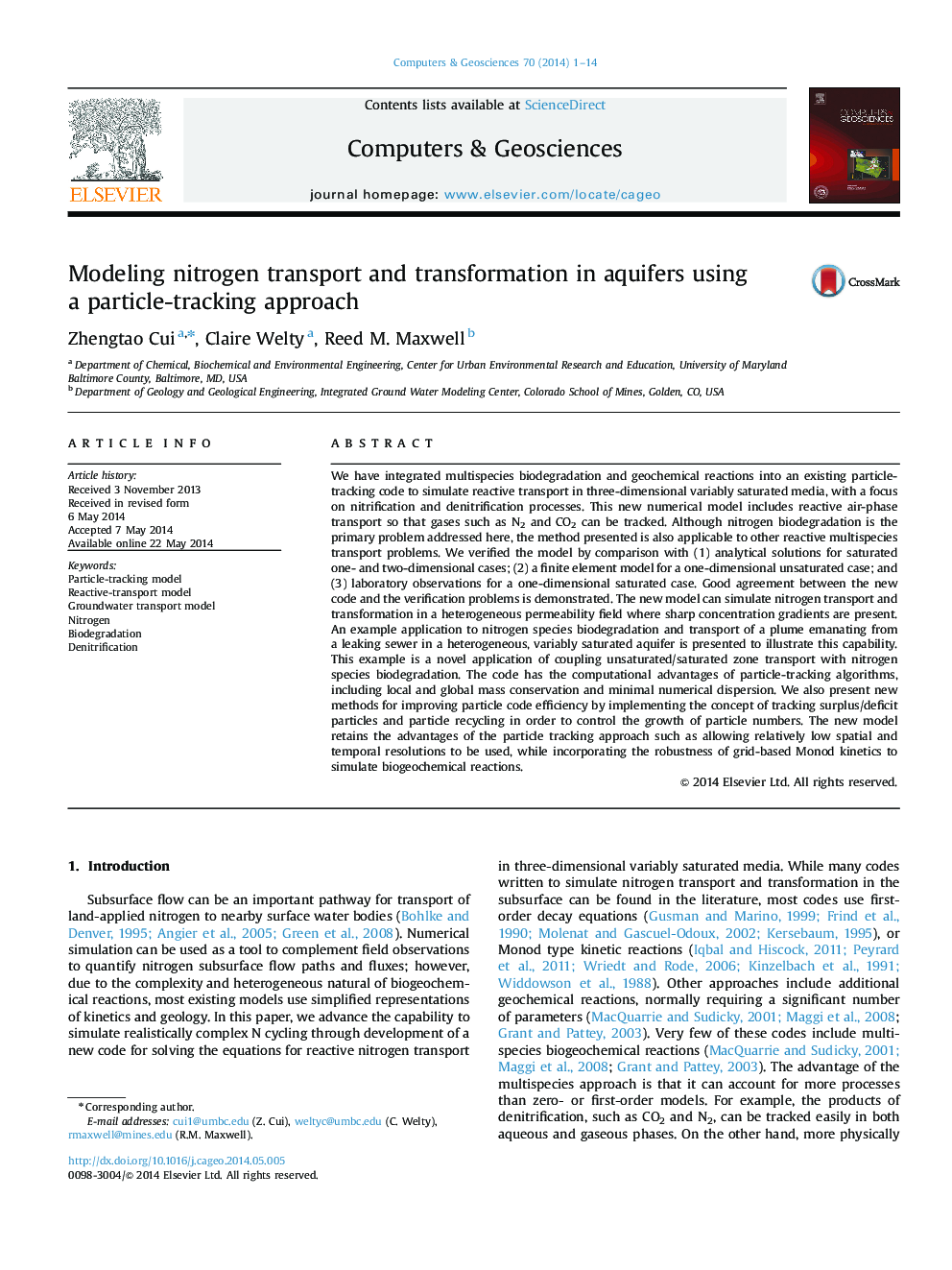| کد مقاله | کد نشریه | سال انتشار | مقاله انگلیسی | نسخه تمام متن |
|---|---|---|---|---|
| 507203 | 865101 | 2014 | 14 صفحه PDF | دانلود رایگان |
• We present a particle-tracking based nitrogen transport and transformation model.
• The model includes the Monod kinetics and inorganic geochemical reactions.
• The model was verified with other models and laboratory observations.
• The model was applied to a heterogeneous site that has a leaking sewer.
• The optimized code will facilitate application at large scales.
We have integrated multispecies biodegradation and geochemical reactions into an existing particle-tracking code to simulate reactive transport in three-dimensional variably saturated media, with a focus on nitrification and denitrification processes. This new numerical model includes reactive air-phase transport so that gases such as N2 and CO2 can be tracked. Although nitrogen biodegradation is the primary problem addressed here, the method presented is also applicable to other reactive multispecies transport problems. We verified the model by comparison with (1) analytical solutions for saturated one- and two-dimensional cases; (2) a finite element model for a one-dimensional unsaturated case; and (3) laboratory observations for a one-dimensional saturated case. Good agreement between the new code and the verification problems is demonstrated. The new model can simulate nitrogen transport and transformation in a heterogeneous permeability field where sharp concentration gradients are present. An example application to nitrogen species biodegradation and transport of a plume emanating from a leaking sewer in a heterogeneous, variably saturated aquifer is presented to illustrate this capability. This example is a novel application of coupling unsaturated/saturated zone transport with nitrogen species biodegradation. The code has the computational advantages of particle-tracking algorithms, including local and global mass conservation and minimal numerical dispersion. We also present new methods for improving particle code efficiency by implementing the concept of tracking surplus/deficit particles and particle recycling in order to control the growth of particle numbers. The new model retains the advantages of the particle tracking approach such as allowing relatively low spatial and temporal resolutions to be used, while incorporating the robustness of grid-based Monod kinetics to simulate biogeochemical reactions.
Figure optionsDownload as PowerPoint slide
Journal: Computers & Geosciences - Volume 70, September 2014, Pages 1–14
